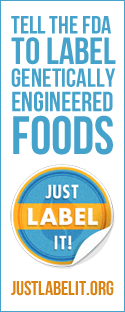|
SILVER SPRING, Md. -- Science tells us that improvements in diet and nutrition offer one of our greatest opportunities to have a profound and generational impact on human health, reducing the burden of chronic disease, from diabetes to cancer to heart disease. We know that many Americans both want and use nutritional information on food package labels to make decisions about what to eat to help improve their health. But consumers can't always access similar information at their favorite restaurant chains. Or there is little consistency in the information that they receive. Yet more Americans are eating meals away from home.
Also read, Pita Pit Urges the Restaurant Industry to Extend Calorie Transparency Across Canada. This is why Congress gave the U.S. Food and Drug Administration responsibility for ensuring that families across America would have consistent access to calorie and nutrition information on restaurant menus and takeout foods – regardless of which state or city they live in. This legislation provided a uniform standard to replace the patchwork of menu labeling laws that were appearing around the country. The new framework ensured that consumers would have access to consistent, science-based information. Many have heard me cite this statistic, but it bears repeating because this is a driving factor for us at the FDA and for those in Congress who crafted the law: Americans currently eat and drink about one-third of their calories away from home. At the same time, rates of child and adult obesity in the U.S. are at historic highs. Research, including a recent RAND Corporation study, suggests that people choose menu items with fewer calories when they have access to calorie information and that such information does not affect their satisfaction with the choice they make or their ratings of the restaurant. Studies suggest that access to clear and consistent information about calories in restaurant items can help reduce calorie intake, which over time could make a difference in obesity rates. Consumers may have already noticed calorie counts listed next to their favorite menu items in some restaurants, coffeehouses and supermarket salad bars. I'm pleased to see many restaurants are already implementing these new provisions. We applaud their efforts in meeting the needs of Americans. Starting today, this information will be required throughout the country as the FDA's menu labeling rule is implemented. Consumers walking into eating establishments covered under the rule will know how many calories are in the foods they may want to order. This includes establishments that are chains with 20 or more locations doing business under the same name that offer substantially the same menu items consisting of restaurant-type foods. Consumers can also ask these establishments for additional nutritional information -- provided, for example, as a booklet, handout or in electronic form -- that includes the amount of sodium, fiber, sugars, total carbohydrates, saturated fat and protein for any standard menu item. This is information Americans want or need in order to make decisions about the foods they eat so they can make more informed choices about their diets and health for themselves and their families. We're also committed to helping industry in fulfilling this requirement in a way that is both effective and not overly burdensome. In order for these opportunities to be maximally beneficial to consumers, the new provisions also need to be minimally burdensome for businesses to effectively comply. That's why we've taken new steps to reduce the costs that the new provisions will impose on businesses. Today, the FDA completed a last critical step before the menu labeling rule implementation date by finalizing an existing guidance that provides additional clarity and details requested by the food industry on the FDA's thinking on various topics related to the new regulation. While the overall framework in our guidance remains largely unchanged, we've made some meaningful updates to address thoughtful and important input from the public and industry stakeholders. These include more flexibility for businesses in how they can address challenges that some establishments faced in meeting the law's requirements. The changes in the final guidance include expanded and new examples of the many ways to comply with the menu labeling requirements. The guidance includes pictures of the flexible approach that covered establishments can take, under FDA's regulation, in choosing how to display calories on menus and menu boards. The agency's goal is to give establishment owners clear, efficient ways to deliver this information to consumers. According to the National Restaurant Association, thousands of restaurants are already complying with the labeling requirement in anticipation of the upcoming deadline and because consumers have been asking for more transparency on the nutritional content of the food they order. Overall, the guidance clarifies that posters, billboards, coupon mailings and other marketing materials are generally not considered menus that would require calorie counts under our regulation. It also provides other practical and flexible options for implementing the regulation, such as graphical depictions to illustrate ways to post calories for multiple items on a single sign, such as those that might be features at a self-service buffet or beverage stations. In response to concerns from pizza chain owners who shared with us that they believed it would be difficult to develop menu boards reflecting the thousands of topping combinations people might want on their pizza, we provided several graphic illustrations to provide options for how to accomplish this. Our goal is to implement these Congressional provisions in the most efficient, effective manner that both benefits consumers without placing unnecessary barriers on industry. To advance these goals, we're also taking a flexible approach to implementing the new provisions. We plan to work collaboratively with covered establishments to help them meet the requirements so that more consumers will be able to access and use nutritional information that will now be at their fingertips or in front of them on a menu board. For the first year, we'll center our efforts on helping covered establishments come into compliance with the law. We'll focus on educational outreach to provide parties with help on how they can efficiently comply with the new provisions. The FDA will allow covered entities a reasonable opportunity to make adjustments to bring themselves into compliance. We're encouraged that so many consumers will benefit from the uniform calorie information on menus covered by the new law. We'll continue to work with industry stakeholders to support their implementation. But it's also important to note that the implementation of menu labeling is one part of a comprehensive tool box -- that includes changes to the Nutrition Facts label and modernization of labeling claims -- to help consumers make healthier choices for themselves and their families. These efforts are part of a broader multi-year Nutrition Innovation Strategy that I announced earlier this year. FDA's new policy aims to provide all Americans with easier access to nutritious, affordable foods by arming consumers with information and encouraging the food industry to innovate in producing the healthier foods that today's informed consumer wants. The Nutrition Innovation Strategy will modernize claims like "healthy" on food packages, modernize how we establish standards of identity for foods, make ingredient information on labels easier to decipher, help streamline the process for establishing qualified health claims on food labels, and encourage companies to reduce sodium in their products. As we pass this new milestone with menu labels, we've already begun important steps towards the next nutrition-focused efforts to help Americans lead healthier lives as part of our new Nutrition Innovation Strategy. The FDA, an agency within the U.S. Department of Health and Human Services, protects the public health by assuring the safety, effectiveness, and security of human and veterinary drugs, vaccines and other biological products for human use, and medical devices. The agency also is responsible for the safety and security of our nation's food supply, cosmetics, dietary supplements, products that give off electronic radiation, and for regulating tobacco products. SOURCE U.S. Food and Drug Administration
2 Comments
5/8/2018 07:27:05 am
Interesting and amazing how your post is! It Is Useful and helpful for me
Reply
Leave a Reply. |
Advertisement
News & Updates
Stay informed with the latest news around foodservice, agriculture and other related food news. Advertisement Opportunities
|


 RSS Feed
RSS Feed


